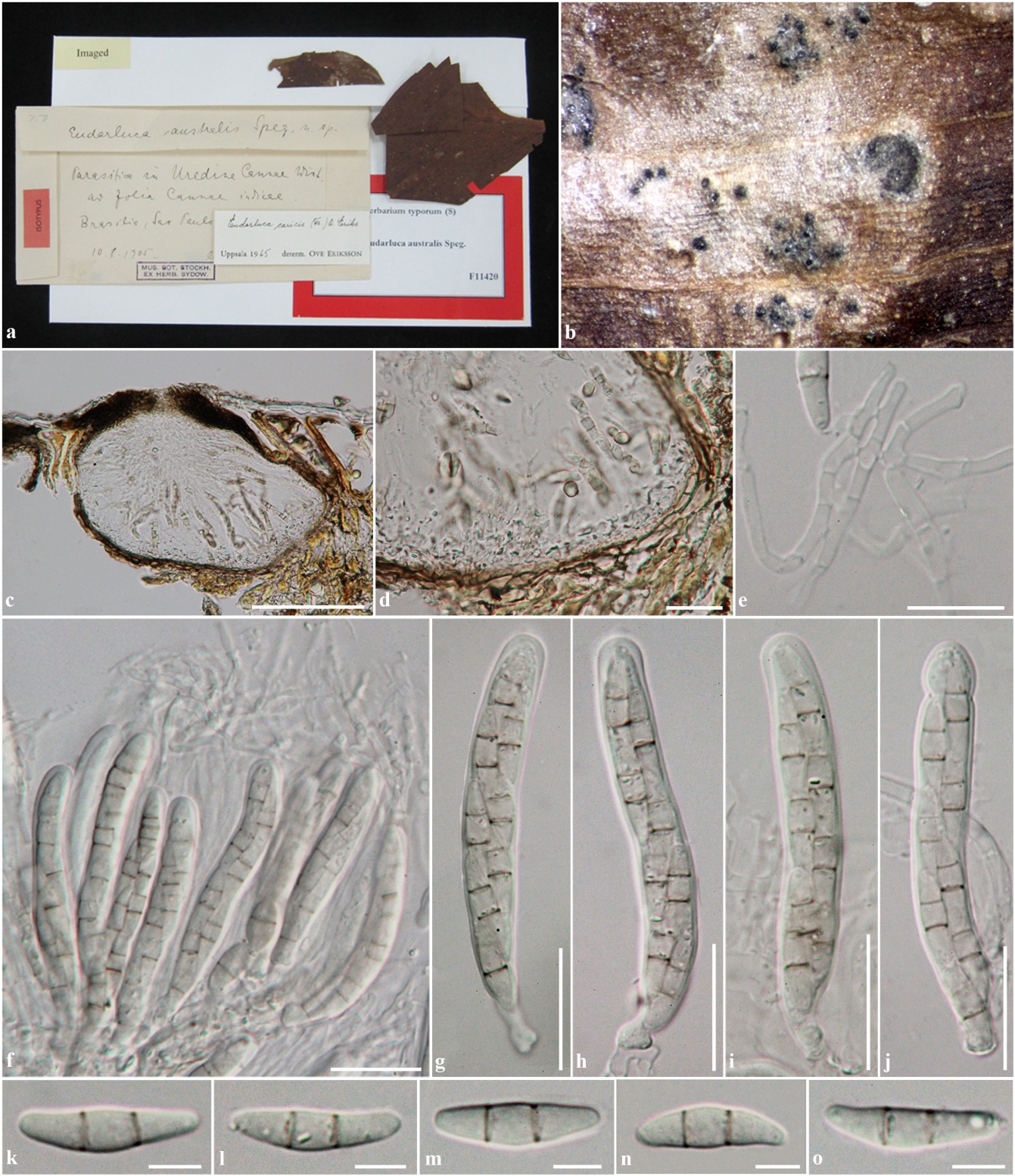Eudarluca australis Speg., Revta Mus. La Plata 15: 22 (1908)
Hyperparasitic associated with rust fungi on leaves of Canna indica L. (Cannaceae). Sexual state: Ascomata 110-180μm high, 170–280μm diam., scattered, solitary to gregarious, immersed to semi-immersed, visible as raised, black tiny spots in black pseudostromata on leaf lesions, uniloculate, subglobose to irregular, glabrous, dark brown to black, ostiole central, with minute papilla. Peridium 5–13μm wide, thinwalled, of unequal thickness, slightly thickened at the apex, composed of 1–3 layers of brown to dark brown, flattened, pseudoparenchymatous cells, arranged in textura angularis. Hamathecium composed of numerous, 1.5–3μm wide, filiform, distinctly septate, frequently anastomosing, broadly cellular pseudoparaphyses, embedded in mucilaginous matrix. Asci (44–)50–65×8–10μm (x = 57×9μm, n=25), 8-spored, bitunicate, fissitunicate, cylindrical, short pedicellate or subsessile, apically rounded, with indistinct ocular chamber. Ascospores 15–17(−18)×3–4.5μm (x= 16.7×4.1μm, n=30), phragmosporous, overlapping or 2-seriate, fusiform, or oblong with rounded ends, pale brown, 2-septate, rarely 1-septate, slightly curved, not constricted at the septa, smoothwalled. Asexual state: see notes.
Material examined: BRAZIL, São Paulo, Botanical Gardens, associated with rust (Pucciniaceae) on leaves of Canna indica L., 10 August 1905, A. Usteri (S-F11420, isotype).
Fig. 1 Eudarluca australis (S-F11420, isotype). a Herbariumlabel and specimens. b Fruiting bodies on host surface. c Section through ascoma. d Section through peridium. e Pseudoparaphyses. f Asci with pseudoparaphyses. g–j Asci. k–o Ascospores. Scale bars: c=100μm, d, f, g, h, i, j=20μm, e=10μm, k, l, m, n, o, = 5μm

